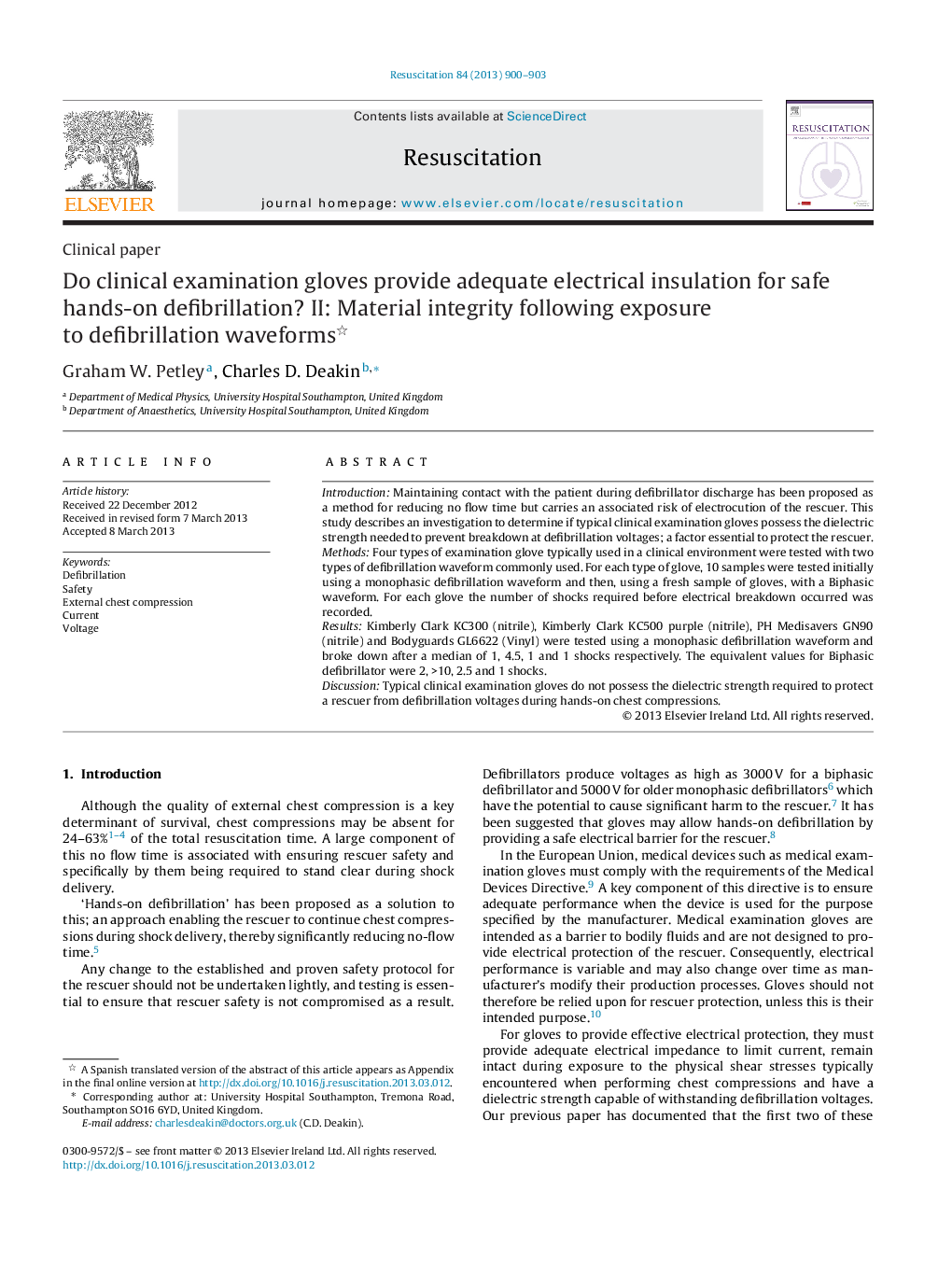| Article ID | Journal | Published Year | Pages | File Type |
|---|---|---|---|---|
| 3008040 | Resuscitation | 2013 | 4 Pages |
IntroductionMaintaining contact with the patient during defibrillator discharge has been proposed as a method for reducing no flow time but carries an associated risk of electrocution of the rescuer. This study describes an investigation to determine if typical clinical examination gloves possess the dielectric strength needed to prevent breakdown at defibrillation voltages; a factor essential to protect the rescuer.MethodsFour types of examination glove typically used in a clinical environment were tested with two types of defibrillation waveform commonly used. For each type of glove, 10 samples were tested initially using a monophasic defibrillation waveform and then, using a fresh sample of gloves, with a Biphasic waveform. For each glove the number of shocks required before electrical breakdown occurred was recorded.ResultsKimberly Clark KC300 (nitrile), Kimberly Clark KC500 purple (nitrile), PH Medisavers GN90 (nitrile) and Bodyguards GL6622 (Vinyl) were tested using a monophasic defibrillation waveform and broke down after a median of 1, 4.5, 1 and 1 shocks respectively. The equivalent values for Biphasic defibrillator were 2, >10, 2.5 and 1 shocks.DiscussionTypical clinical examination gloves do not possess the dielectric strength required to protect a rescuer from defibrillation voltages during hands-on chest compressions.
